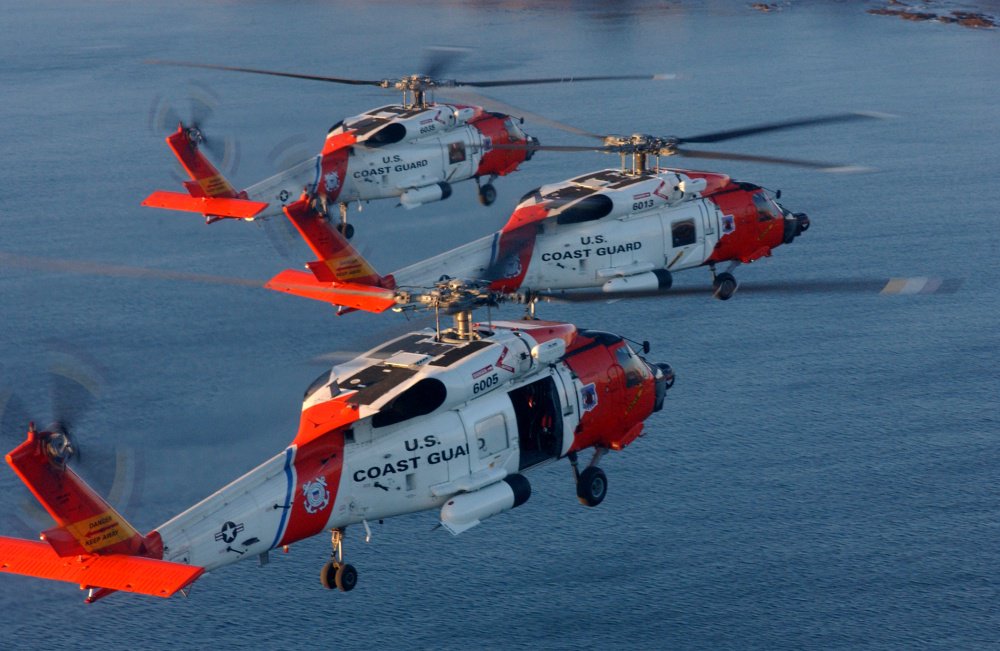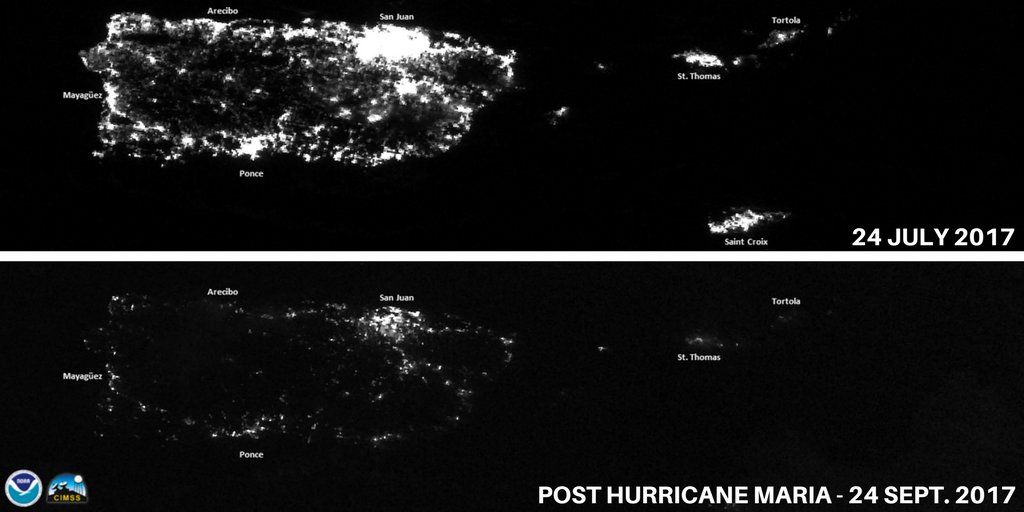Recovery Effort Ramps Up in Puerto Rico
The U.S. Coast Guard says that it has reallocated additional resources to the disaster response effort in Puerto Rico and the U.S. Virgin Islands, which are attempting to recover after the passage of Hurricane Maria. The service has 13 cutters and 10 aircraft working in the area, carrying relief supplies to hard-hit areas and providing SAR support.
"Our personnel, aircraft and cutter fleet have mobilized from throughout the Atlantic Area, bringing with them port security presence, humanitarian aid to augment our Federal Emergency Management Agency and Puerto Rico Emergency Management Agency partners, as well as command and control capabilities while our shore based units in Puerto Rico continues to reconstitute their infrastructure," said Rear Adm. Peter Brown, commander of Coast Guard's District Seven. "Our newest National Security Cutter James along with our fast response cutter fleet, medium endurance cutters and seagoing buoy tenders mobilized quickly following Hurricane Maria to fulfill these missions and will continue to do so."

Thanks to the Coast Guard's efforts, the mission-critical port of San Juan has reopened (with restrictions and for daylight transit only). The port is a crucial lifeline for Puerto Rico, which gets most of its supplies from the U.S. mainland. Early reports indicate that about 80 percent of the island's agriculture was wiped out in the storm, which will raise the importance of food aid and commercial food shipments. In the USVI, most ports on St. Thomas and St. Croix have reopened with restrictions, along with Cruz Bay on St. John.
In a statement on Monday, vessel operator Crowley Maritime said that it now has over 3,000 containers of food, supplies and other cargo at its terminal in San Juan, with more on the way, and that the next step is to expedite the local distribution of the cargo.
“We want to get goods to people as quickly and efficiently as possible, and to do that we need our customers to work with their truckers to take delivery,” said Jose “Pache” Ayala, vice president, Puerto Rico services. “Just as many of our employees have stepped up to unload vessels under difficult circumstances, we are hopeful that shippers and their truckers will act quickly to help get cargo to the people who need it most.”
Days after the storm, most of Puerto Rico remains without power: its power plants are serviceable, but its transmission grid was almost entirely destroyed. An estimated 80 percent of the island's high-voltage power lines are down, and estimates for the timeline for repairs run between four and six months. Until then, many important facilities – hospitals, government buildings, the island's main airport – are running on generators.
 Puerto Rico and the USVI at night, before Irma and Maria (top) and after (NOAA / GOES satellite imagery)
Puerto Rico and the USVI at night, before Irma and Maria (top) and after (NOAA / GOES satellite imagery)
Governor Ricardo Rossello put out a plea for federal assistance to recover and rebuild. We need something tangible, a bill that actually answers to our need right now," he told CNN on Monday. "Otherwise, there will be . . . a massive exodus to the [mainland] United States." FEMA says that there are about 10,000 federal employees involved in the recovery effort.
President Donald Trump has stoked controversy over the federal response by remaining silent. After Hurricane Harvey hit Texas, he focused his public statements on the importance of providing federal assistance to affected areas. Since Saturday he has made no mention of Puerto Rico, despite maintaining an active presence on Twitter. He has not yet scheduled a visit to the island, but a White House spokesperson told media that he intends to tour the area at a future date after infrastructure concerns are resolved.
Adm. Zukunft: Coast Guard has its own recovery ahead
On a trip to Puerto Rico on Monday, USCG Commandant Adm. Paul Zukunft told Politico that the service suffered nearly $400 million in damage during Hurricane Harvey and as much as another $600 million in Hurricanes Irma and Maria – bringing the total repair bill in the neighborhood of $1 billion. This is about the same amount as the budget for the Coast Guard's next heavy icebreaker.
Zukunft said that the service has about 1,000 people working on relief and recovery missions, and that it's pulling staff from all over the country to fill the need. "We're tired," he said, adding that he hopes that there will be a break in the action for the USCG to rest.
